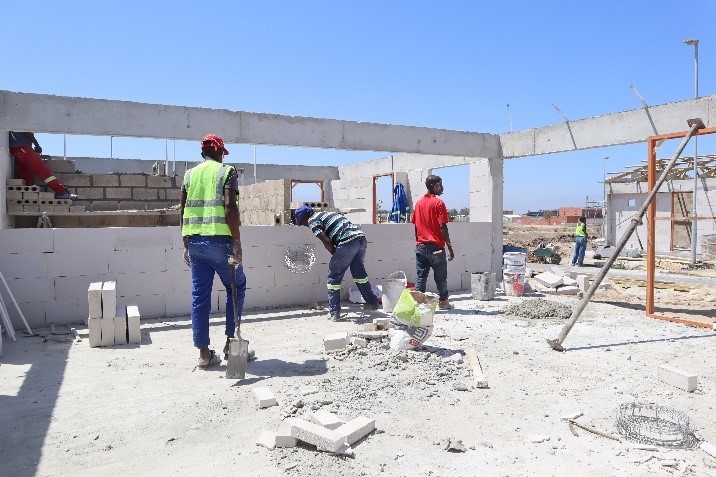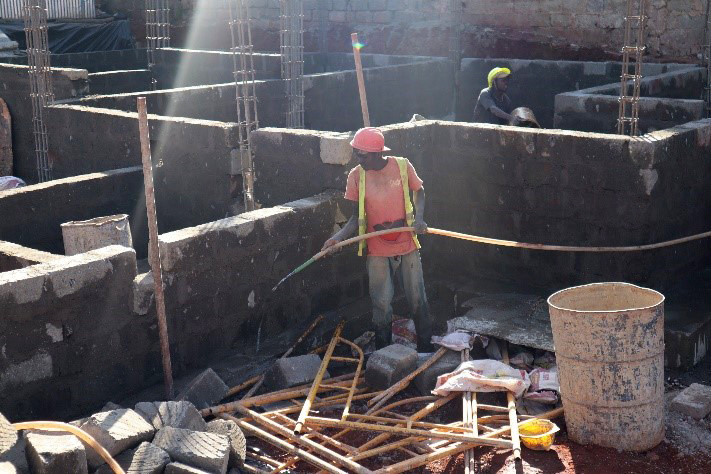Sustainable transition to industrialized construction in the developing urban world
The Chair of Innovation and Industrial Construction has been awarded the 2018 ARUP Global Research Challenge for the project: Sustainable transition to industrialized construction in the developing urban world. The annual challenge aims to foster innovation, exploration and multi-disciplinary collaboration to understand global challenges.
As the world becomes increasingly urbanized, global cities must provide adequate and affordable housing for growing populations. The regions with the fastest rates of growth are in developing economies, where cities tend to have limited access to the resources required — namely the capital, materials, and skilled labor — to meet the rising residential demand. This coincides with increasing pressure to minimize the environmental impact of the built environment globally. To limit climate change to 1.5° Celsius, cities need to significantly reduce emissions. Material consumption and energy usage for buildings and infrastructure require reductions of 33% by 2030 and 50% by 2050. To achieve this, substantial interventions must be made such as improving material efficiency, enhancing building utilization, switching to low carbon materials, and reusing building components.
Providing housing for growing and urbanizing populations while minimizing its environmental impact is likely to be one of the greatest challenges facing the built environment in the 21st century. This challenge is especially difficult for developing economies, where a predicted 65% of growth in the construction industry is expected to occur due to the rapid increase of urban population.
An emergent trend in the building sector called Industrialized Construction (IC) could help alleviate these future challenges facing the global housing industry. IC is an umbrella term referring to broad strategies applying principles of industrialization and manufacturing to improve the productivity and predictability of construction projects. IC approaches in the residential sector are often characterized by changes to conventional business models, use of advanced technologies, and continual improvement of standardized processes. In addition, IC can yield additional capacity of design and construction activities that is not easy or possible to do with current construction methods. The capacity comes in forms of the use of digital tools that allow for design optimization and construction techniques that facilitate products to be manufactured and fabricated more efficiently.
This report aims to explore the micro- and macro-influences of IC applications in the specific context of developing economies. Data is drawn from field visits to three cities— Addis Ababa, Nairobi, and Cape Town – in sub-Saharan Africa. The report begins with a micro-level view of building elements. A life cycle analysis is conducted to compare the environmental impacts of different construction materials and methods. Next, a macro-level view focuses on the intricate ecosystem influencing IC adoption. The results of both analyses present a range of potential outcomes — negative and positive — for the overall adoption and performance of IC strategies and products. Using existing practices and emerging insights around IC methods and innovations, the report offers a road map to demonstrate a range of possible scenarios for IC adoption. Each pathway includes examples of objectives and specific levers for local decision-makers to transition to IC in a responsible and intentional manner. The tool is especially intended for urban areas in developing economies, expanding on how policymakers, city leaders, local entrepreneurs, and existing industry practitioners might consider adapting IC to unique contexts in order to achieve ambitious goals around housing construction and a sustainable built environment.
AUTHORS:
Firehiwot Kedir, lead researcher,
Tyler Pullen, research associate,
Prof. Dr. Daniel M. Hall, principal investigator,
Richard Boyd, Arup project manager,
Jo da Silva, Arup project director,
CONTRIBUTORS:
Thomas Rupper,
Marco Zumstein,
Timothy Partl,
LAYOUT AND GRAPHICS EDITOR:
Ming Shan Ng,
Firehiwot Kedir,
Roman Svidran,
Blog post by Daniel Hall, 14.03.2019: Will our planet sustain 2 billion more homes?

